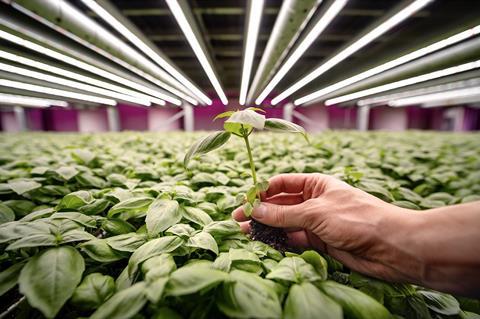Dutch vertical farming group looks to harness the natural green powers of solar and wind energy

Netherlands-based Future Crops has announced that it has taken its vertical farm a ”further step off the grid” by shifting to reliance on 100 per cent renewable energy.
The company said it was solving the primary hurdle to bringing the industry to a substantially greater carbon-neutral position by harnessing the natural green powers of solar and wind energy, heping it to advance its sustainability goals.
”Over the past decade, vertical farms have been cropping up as creative method of boosting food resilience and bringing food sources closer to home,” Future Crop stated. ”Multi-story indoor farming optimises land use by growing food from the ground up in designated horticultural regions or even within dense urban localities.
”However, this method of growing crops in a controlled indoor environment can be energy intensive.”
The company operates a state-of-the art, multi-level indoor vertical farm in ABC Westland, Netherlands. The facility grows a broad portfolio of pesticide-free leafy green vegetables and herbs.
While many such facilities rely on hydroponics, the scale-up developed a unique, proprietary soil substrate in which to grow crops, bringing the vertical farm concept closer to nature and the earth.
“Vertical farming is an emerging industry that is gaining traction due to its multiple virtues,” sais Gary Grinspan, co-founder and CEO of Future Crops.
“We are able to grow tremendous amounts of high-value food on a much smaller stretch of land—approximately 5 per cent of the land required for conventional agriculture,” he continued. ”And having no reliance on seasonality amplifies growing cycles tenfold. This means we can grow more, faster while concurrently cutting the food mileage.
”Our produce also has a naturally longer shelf-life which cuts food waste and eliminates ecotoxicity to people and the earth since no pesticides or harmful chemicals are required,” Grinspan noted. ”The Future Crops system also addresses the downside of the controlled indoor methods of growing crops: high energy consumption due to crops being unable to soak up natural sunlight.”
Future Crops said that all its resources were reused and recycled, including 97 per cent of the water. Soil substrate that has undergone several growth cycles is sold to other growers who treat and reuse it.
The company said its commitment even goes to overcoming food waste. Produce that does not meet the visual specifications for retail is sold to food producers.
“Food waste and reducing carbon footprint are the most pressing issues in the battle to save the planet,” said Grinspan.
“As the population grows over the next three decades, food consumption is predicted to increase by 70 per cent,” he outlined. ”To accommodate that, arable land will need to be doubled, in turn driving up water usage. Currently, 75 per cent of global water is consumed by agriculture.”
“The lack of available land for food growth has led to a cascade of problems, beginning with the conversion of forests into agricultural land,” explained Susanne Mosmans, business unit director and CMO of Future Crops.
“Deforestation already has disrupted the healthy balance of carbon and oxygen emissions, leading to rising temperatures that negatively impact crops growth and yields,” she added. ”This has sparked the need to think out of the box. And that’s where vertical farming comes in. It offers the ultimate solution to make healthy, sustainable food accessible to all.”






No comments yet